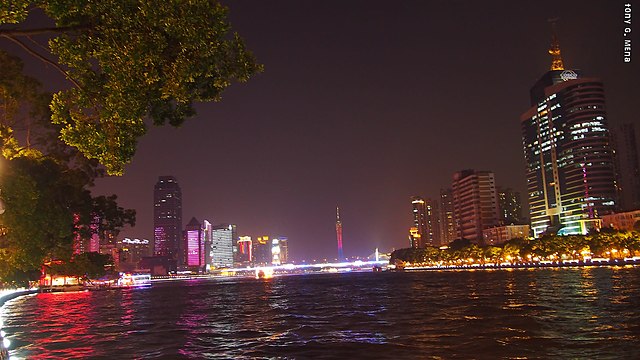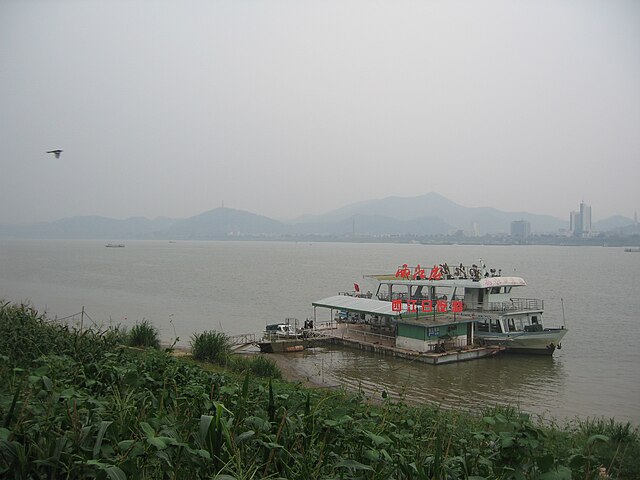The Xi River or Si-Kiang is the western tributary of the Pearl River in southern China. It is formed by the confluence of the Gui and Xun Rivers in Wuzhou, Guangxi. It originates from the eastern foot of the Maxiong Mountain in Qujing City, Yunnan Province. Then it flows east through Guangdong, and enters the Pearl River Delta just east of the Lingyang Gorge in Zhaoqing. The main branch of the Xi River flows southeast through the delta entering the South China Sea at Modao Men, just west of Macau. The major cities along the Xi include Wuzhou, Zhaoqing, and Jiangmen.
Looking across the Xi River from Heshan to Jiujiang, Foshan City.
Xi River in Zhaoqing.
Marble Hill (Cockscomb Rock) on the West River, around 1871
The Pearl River is an extensive river system in southern China. "Pearl River" is often also used as a catch-all for the watersheds of the Pearl tributaries within Guangdong, specifically the Xi ('west'), Bei ('north'), and Dong ('east'). These rivers all ultimately flow into the South China Sea through the Pearl River Delta. Measured from the farthest reaches of the Xi River, the 2,400-kilometer-long (1,500 mi) Pearl River system constitutes China's third-longest, after the Yangtze River and the Yellow River, and its second largest by volume, after the Yangtze. The 453,700 km2 (175,200 sq mi) Pearl River Basin drains the majority of Guangdong and Guangxi provinces, as well as parts of Yunnan, Guizhou, Hunan and Jiangxi; it also drains the northernmost parts of Vietnam's Northeast Cao Bằng and Lạng Sơn provinces. The Pearl River is famed as the river that flows through Guangzhou.
Pearl River in Humen near Humen Town
River Pearl and Canton Tower
Looking over the Xi River ("West River") from Zhaoqing to Gaoyao
Pearl River at night, Guangzhou







